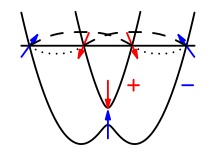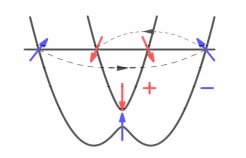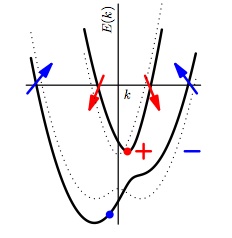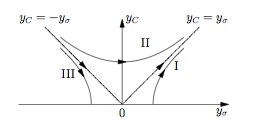To describe correctly the limit of vanishing magnetic field one needs to consider also asymmetric two-particle processes (center figure).
Changing the angle between spin-orbital axis and that of the magnetic field from 90o leads to mis-alignment of the centers-of-mass of the two subbands and eventual suppression of the pair-tunneling by the momentum-non-conservation (right figure).
 |
 |
 |
